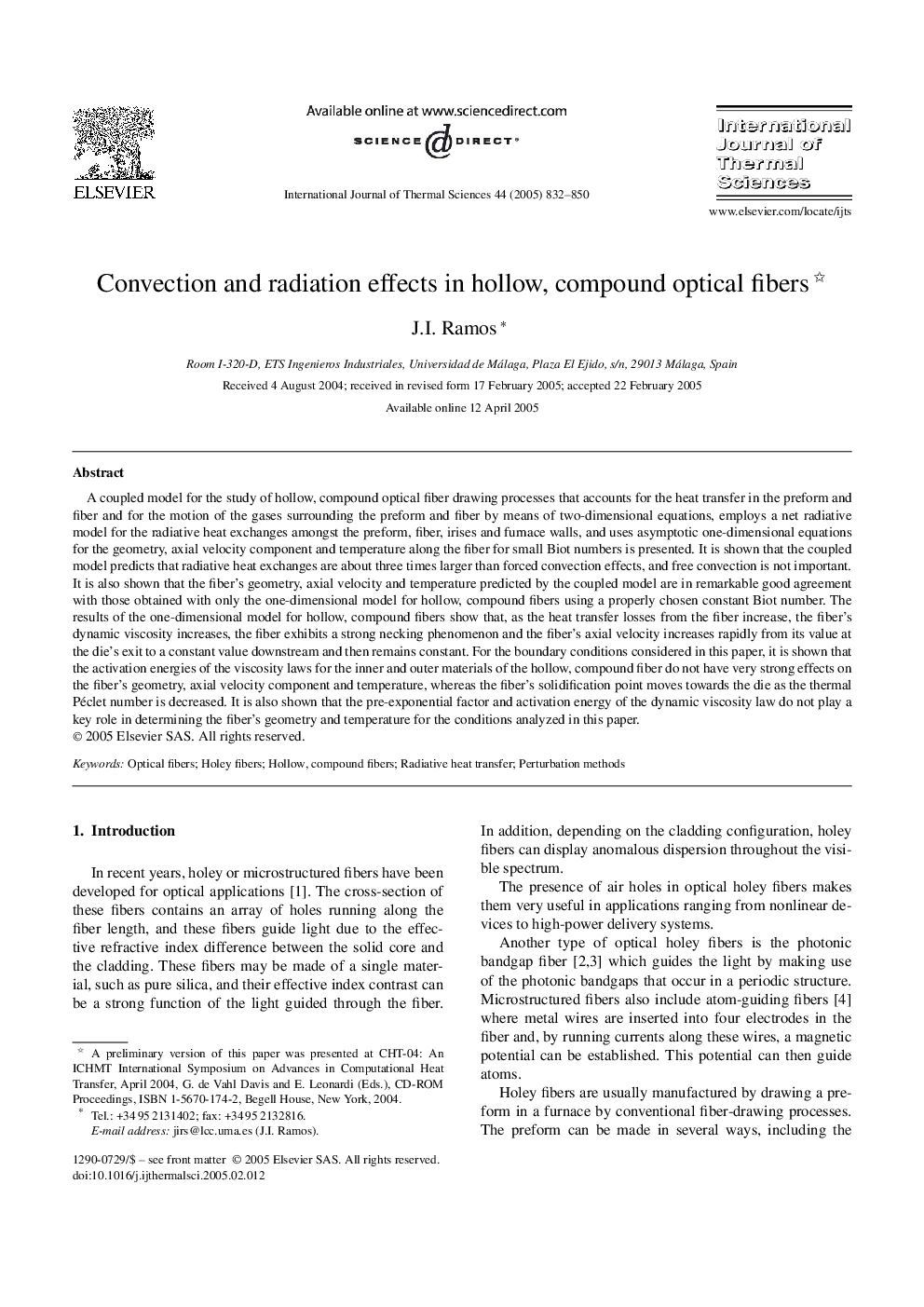| کد مقاله | کد نشریه | سال انتشار | مقاله انگلیسی | نسخه تمام متن |
|---|---|---|---|---|
| 9692834 | 1458847 | 2005 | 19 صفحه PDF | دانلود رایگان |
عنوان انگلیسی مقاله ISI
Convection and radiation effects in hollow, compound optical fibers
دانلود مقاله + سفارش ترجمه
دانلود مقاله ISI انگلیسی
رایگان برای ایرانیان
کلمات کلیدی
موضوعات مرتبط
مهندسی و علوم پایه
مهندسی شیمی
جریان سیال و فرایندهای انتقال
پیش نمایش صفحه اول مقاله

چکیده انگلیسی
A coupled model for the study of hollow, compound optical fiber drawing processes that accounts for the heat transfer in the preform and fiber and for the motion of the gases surrounding the preform and fiber by means of two-dimensional equations, employs a net radiative model for the radiative heat exchanges amongst the preform, fiber, irises and furnace walls, and uses asymptotic one-dimensional equations for the geometry, axial velocity component and temperature along the fiber for small Biot numbers is presented. It is shown that the coupled model predicts that radiative heat exchanges are about three times larger than forced convection effects, and free convection is not important. It is also shown that the fiber's geometry, axial velocity and temperature predicted by the coupled model are in remarkable good agreement with those obtained with only the one-dimensional model for hollow, compound fibers using a properly chosen constant Biot number. The results of the one-dimensional model for hollow, compound fibers show that, as the heat transfer losses from the fiber increase, the fiber's dynamic viscosity increases, the fiber exhibits a strong necking phenomenon and the fiber's axial velocity increases rapidly from its value at the die's exit to a constant value downstream and then remains constant. For the boundary conditions considered in this paper, it is shown that the activation energies of the viscosity laws for the inner and outer materials of the hollow, compound fiber do not have very strong effects on the fiber's geometry, axial velocity component and temperature, whereas the fiber's solidification point moves towards the die as the thermal Péclet number is decreased. It is also shown that the pre-exponential factor and activation energy of the dynamic viscosity law do not play a key role in determining the fiber's geometry and temperature for the conditions analyzed in this paper.
ناشر
Database: Elsevier - ScienceDirect (ساینس دایرکت)
Journal: International Journal of Thermal Sciences - Volume 44, Issue 9, September 2005, Pages 832-850
Journal: International Journal of Thermal Sciences - Volume 44, Issue 9, September 2005, Pages 832-850
نویسندگان
J.I. Ramos,